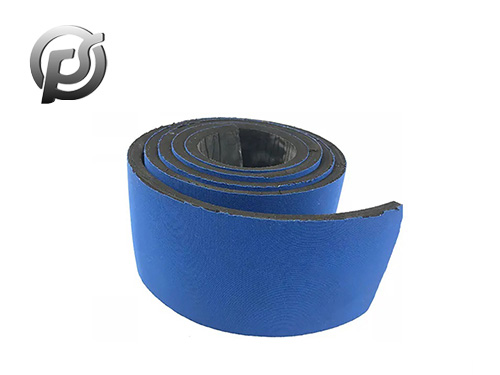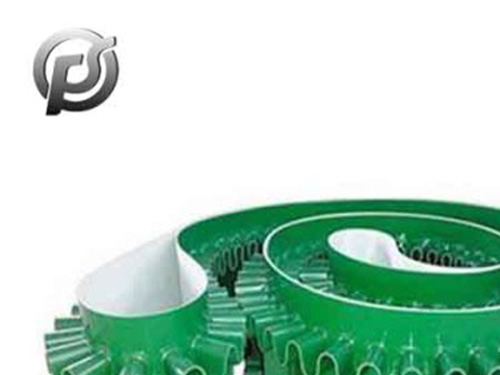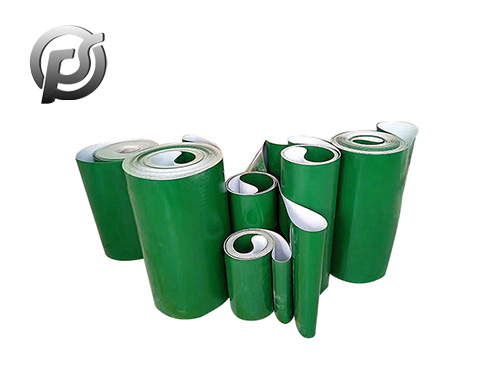According to the damage degree of the belt, the
belt conveyor commonly used belt repair methods are as follows:
Viscose cold repair
This method is suitable for belt protective layer damage, small area, the core layer damage is light. The specific steps are:
(1) Use a repair knife to cut and tear off the covering layer according to the damage range.
(2) Use wood file to polish the adhesive surface to a certain roughness.
(3) Mix the colloid evenly, apply it evenly on the belt polishing place with a brush, and air dry for about 20min.
(4) Cut the adhesive tape of the covering layer into the shape of the repair, place it in the adhesive position, and then beat it evenly with a wooden hammer until the adhesive is tight and it can be air-dried for two hours.
Plate tape buckle repair
Wire rope core tape is often broken out of the wire rope by materials. When repairing, it can be repaired by adhesive tape buckle along the length of the wire rope crack. Although the plate type adhesive tape buckle is small, it is very convenient to repair the adhesive tape. It can control the small damage of the adhesive tape well and prevent the expansion of the adhesive tape damage. The belt holes can be used to repair. First, remove a square from the damaged area, then cut a piece of tape of the same size to fill the hole and tape it around the square. The patched tape piece can be cut on the old tape, but it must have the same specifications and dimensions as the used tape, and the direction of the longitude and latitude lines of the tape core should be the same as that of the used tape.
Viscose hot repair
If the belt is locally torn, it is necessary to use viscose hot repair method, that is, after the crack is treated, raw rubber is coated with rubber paste, adhesive tape is affixed, and then under certain pressure, temperature and time conditions, through vulcanization reaction, the raw rubber becomes vulcanized rubber, so as to obtain the best adhesive strength at the crack. The specific steps are as follows:
(1) foam. Use unleaded gasoline to evenly soak the raw tape for hot viscose tape and make it look like thin rice soup.
(2) Surface treatment of belt cracks. On the upper and lower surfaces of the belt, remove the surface rubber covering 30mm wide on the left and right sides of the crack along the length direction, and use the hand grinding wheel to coat the exposed canvas layer to completely remove the remaining rubber.
(3) glue. Use a small brush to evenly brush the soaked glue inside the tape crack and on the canvas layer, and put the rubber rubber cut according to the site size inside the crack and the part where the rubber skin is removed.
(4) Heating. After the gluing work, heat immediately. When heating, make the upper and lower heating sleeves tightly clamp the adhesive tape crack, put the heating plate into the upper and lower heating sleeves in turn, and start heating after the power is on. When the temperature reaches about 148℃, stay for 2 ~ 3min, disconnect the power supply, let the heater slowly cool to normal temperature (about two hours), remove the heater, and complete the bond of a crack.
Vulcanized joint
The last way to repair the tape is to make the tape joint again. This method is suitable for the tape with heavy damage and can no longer bear the tension during operation. If it continues to operate, the tape may be broken. There are many ways to re-make belt joints, including mechanical buckle connection method and vulcanized hot connection method. Under conditions permitting, the vulcanization hot bonding method should be preferred. The adhesive tape joint formed from vulcanization has good quality and high tensile strength, but the vulcanization method usually has a more complicated process and a longer time. Vulcanization of the whole core tape is usually as shown in the following figure, according to a certain size will need to butt the rubber head cut into sawtooth shape, in the contact surface of the sawtooth coated with vulcanized glue after the two glue head lapping, and then in the lap of the upper and lower sides of the covering core glue and surface glue after heating, pressure vulcanized into a whole.
If the rubber surface and core skeleton of the tape are not seriously damaged, the tape can continue to be used; Once the uniform wear of the rubber surface of the belt reaches more than 1/3, the core is exposed, the rest of the rubber surface has bubbled, wrinkled, or a section of tape multiple serious damage is difficult to repair, it can be considered that this strip (section) of tape has reached the ideal service life.
In addition, in the production process to ensure that the belt conveyor of various protection devices intact, such as tear protection device, coal protection device, broken belt skid protection device, automatic sprinkler, smoke protection can effectively prevent belt damage, prolong the service life of the belt.
 PE Conveyor Belts: Characteristics, Applications, and Advantages
PE Conveyor Belts: Characteristics, Applications, and Advantages
 Stone Conveyor Belt: Enhancing Efficiency and Productivity in Material Handling
Stone Conveyor Belt: Enhancing Efficiency and Productivity in Material Handling
 Optimizing Operations with PE Conveyor Belts: Durability, Efficiency, and Versatility
Optimizing Operations with PE Conveyor Belts: Durability, Efficiency, and Versatility